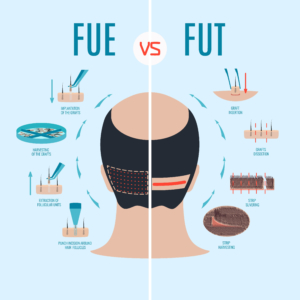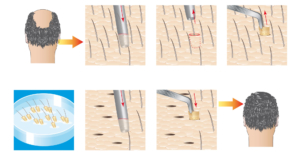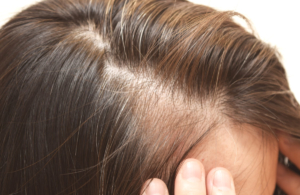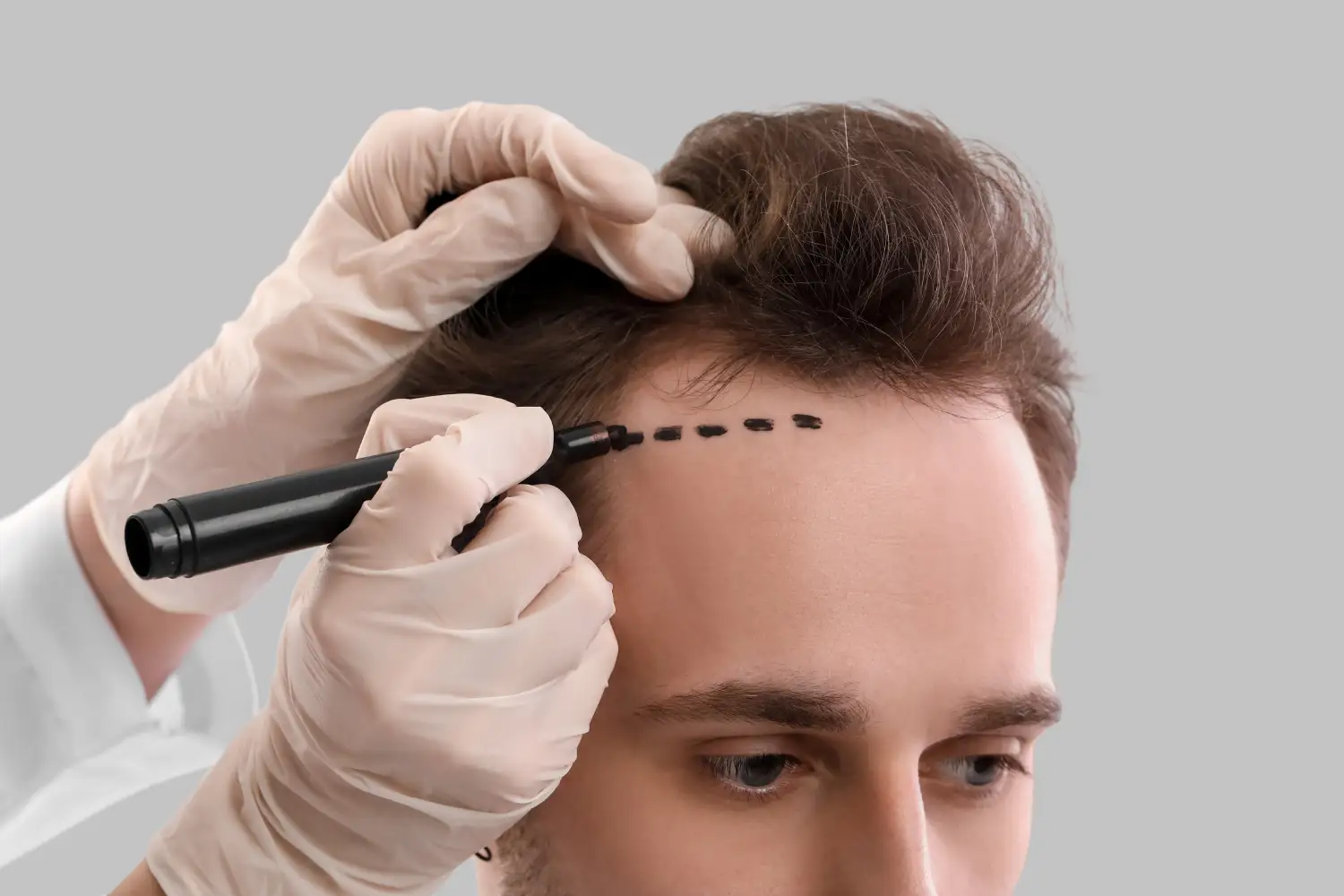Hair loss is a widespread issue that affects a significant portion of the Australian population, both men and women, leading to emotional distress and impacting confidence.
Whether caused by genetics, ageing, hormonal changes, or health conditions, hair loss can be managed effectively with the right treatment. Among the most reliable and permanent solutions is a hair transplant, a medical procedure that has evolved dramatically over recent years.
At Hair and Skin Science, we pride ourselves on being Australia’s largest medical cosmetic clinic network, offering cutting-edge hair restoration services across multiple cities such as Melbourne, Sydney, Brisbane, and Perth. Our expert teams provide tailored advice and advanced treatment solutions, ensuring every patient achieves natural, long-lasting results.
This comprehensive guide aims to consolidate all essential information about hair transplants in Australia, covering everything from candidacy to recovery and expected outcomes, helping you make an informed decision about your hair restoration journey.
Jump to:
- What Is a Hair Transplant?
- Who Is a Good Candidate for a Hair Transplant?
- How Much Does a Hair Transplant Cost in Australia?
- What Happens During a Hair Transplant Procedure?
- Hair Transplant Recovery and Aftercare
- Hair Transplant Results: What to Expect
- Comparing Hair Transplants to Other Hair Loss Treatments
- Understanding Hair Transplant Treatment Risks and How to Minimise Them
- Preparing for Your Hair Transplant: What to Expect in Your Consultation and Pre-Op Steps
- Post-Transplant Lifestyle Tips: Diet, Hair Care, and Habits That Support Growth
- Overseas Hair Transplants: Risks, Costs, and Why Choosing Local Clinics Matters
- Choosing the Right Hair Transplant Clinic in Australia
- Frequently Asked Questions (FAQs)
What Is a Hair Transplant?
Understanding the fundamentals of hair transplantation is crucial before deciding on treatment. A hair transplant involves relocating healthy hair follicles from a donor area (typically the back or sides of the scalp where hair is more resistant to loss) to thinning or bald areas. The transplanted follicles continue to grow hair naturally in their new location.
Hair transplant techniques have evolved to become minimally invasive, with excellent success rates and natural results. They restore not only hair density but also self-confidence and wellbeing.
How Does a Hair Transplant Work?
The procedure starts with harvesting follicular units from the donor area, which are then implanted in the balding recipient site using precise surgical tools. This method respects natural hair direction and density, ensuring an undetectable outcome.

Types of Hair Transplants Offered in Australia
Australia offers several hair transplant techniques to suit different hair loss types, goals, and budgets. Understanding these options helps patients choose the best approach.
1. Follicular Unit Extraction (FUE)
FUE is the most advanced and popular method due to its minimally invasive nature. Individual follicles are extracted one at a time using a micro-punch device, leaving tiny dot scars that heal quickly and are virtually invisible. It is ideal for patients seeking a quick recovery with natural-looking results.
Explore the science behind this technique in detail: The Science Behind FUE Hair Transplants: How It Works
2. Follicular Unit Transplantation (FUT)
FUT, or the strip method, involves removing a strip of scalp from the donor area. This strip is then dissected into individual grafts. Though it leaves a linear scar, FUT allows harvesting a large number of grafts in a single session, making it suitable for extensive hair loss.
Compare FUT with FUE and other methods: Hair Transplant Methods: FUT vs FUE vs Direct Implantation
3. Micro Hair Transplant
Micro hair transplantation uses extremely fine grafts and precise implantation techniques to restore delicate hairlines and create natural density, especially effective in smaller or refined areas such as the frontal hairline and temples.
Find out if this innovative method is right for you: What is a Micro Hair Transplant & is it right for you?
Who Is a Good Candidate for a Hair Transplant?
Not everyone with hair loss is an ideal candidate for a hair transplant. Hair transplant specialists carefully evaluate several factors to determine suitability and to set realistic expectations.
Understanding Hair Transplant Candidacy
Candidates should typically be over 25 years old with stable hair loss patterns to ensure natural, lasting results. Sufficient donor hair density and scalp health are critical. Medical history, underlying conditions, and the cause of hair loss also influence candidacy.
Women require specialised assessment as female hair loss patterns tend to be more diffuse and complex than male pattern baldness.
For a detailed personal assessment, explore: Is a Hair Transplant Right for You? Assessing Candidacy & Expectations
Female Hair Transplant Considerations
Female hair loss requires a nuanced approach, combining surgical and non-surgical treatments tailored to female-specific causes such as hormonal fluctuations or menopause.
Learn about expert female hair transplant solutions here: Female Hair Transplant: Expert Solutions for Hair Loss
How Much Does a Hair Transplant Cost in Australia?
Cost is a key consideration for most patients researching hair transplants. Pricing depends on the transplant method, number of grafts required, clinic location, and doctor expertise.
Factors That Affect Hair Transplant Costs
- Technique: FUE is usually more expensive due to its precision and time-intensive nature.
- Graft Number: The more grafts needed, the higher the cost.
- Location: Clinics in Melbourne, Sydney, and Brisbane generally have higher costs due to operating expenses.
- Additional Services: Consultation fees, aftercare, medications, and follow-ups can add to the overall price.
For personalised cost planning, use the Hair Transplant Calculator: How Many Grafts Do You Need? and read our detailed pricing guide: How Much Does an FUE Hair Transplant Cost in Australia?

What Happens During a Hair Transplant Procedure?
Understanding the hair transplant treatment process helps patients feel more confident and prepared.
Step-by-Step Walkthrough of the Procedure
A hair transplant typically involves an initial consultation to discuss goals and suitability, followed by the treatment under local anaesthesia. Donor follicles are harvested using FUE or FUT methods, prepared, and implanted into the balding areas. The doctor ensures grafts follow natural hair growth direction and density.
Post-procedure, patients receive detailed aftercare instructions to maximise healing and results.
Hair Transplant Recovery and Aftercare
Recovery times vary but generally patients can return to normal life quickly. Proper aftercare is critical for graft survival and optimal results.
Expected Recovery Timeline and Care Tips
- Initial Week: Redness, swelling, and scabbing are common but manageable.
- Weeks 2–4: Transplanted hairs may shed (shock loss phase).
- Months 3–6: Noticeable new hair growth begins.
- Months 9–12: Full results visible as hair thickens and matures.
Strict adherence to aftercare protocols, including gentle washing, avoiding direct sun exposure, and taking prescribed medications, is essential.
For a detailed month-by-month guide, visit: FUE Hair Transplant Recovery Timeline: Month-by-Month Results and Post-Hair Transplant Care: Mastering the Art of Optimal Recovery
Hair Transplant Results: What to Expect
Results develop gradually over months, with most patients seeing significant improvements by the one-year mark. Understanding the phases of hair growth and factors influencing success can manage expectations.
Typical Hair Growth and Final Outcomes
Post-transplant, hair follicles go through shedding, resting, and growth phases before thickening fully. Factors such as age, hair quality, surgical technique, and aftercare impact final appearance.
Explore inspiring transformations with Hair Transplant Before and After and discover the broader advantages: Top 5 Benefits of Hair Transplant Surgery for Men and Women
Comparing Hair Transplants to Other Hair Loss Treatments
Hair transplants are just one of many treatment options available. Non-surgical methods like PRP, PRF, medications, and laser therapy offer alternatives or complementary therapies for hair loss.
Exploring Non-Surgical Hair Loss Options
- PRP & PRF: Use platelet-rich growth factors to stimulate hair follicles and improve scalp health.
- Medications: Finasteride and minoxidil remain common choices for early-stage hair loss.
- Low-Level Laser Therapy (LLLT): Promotes circulation and follicle vitality.
Combining treatments can enhance results and maintain existing hair. You can learn more about complimentary hair loss treatments at:
- Does PRP for Hair Loss Work?
- PRF Before & Aftercare | PRF Treatments
- Laser Therapy for Hair Loss: What You Need to Know About LLLT

Understanding Hair Transplant Treatment Risks and How to Minimise Them
Every hair transplant procedure carries some degree of risk, and hair transplants are no exception. While hair transplantation is considered safe and minimally invasive, patients must understand potential complications to make informed decisions and ensure the best possible outcomes.
Common Risks and Side Effects
- Infection: Though rare with proper sterile technique, infection can occur around graft or donor sites if post-op care is inadequate.
- Scarring: FUT leaves a linear scar; FUE can leave tiny dot scars, which are generally inconspicuous.
- Swelling and Redness: These temporary effects are common but usually resolve within a few days.
- Shock Loss: Temporary shedding of existing hairs around the transplant area can occur but typically regrows within months.
- Numbness or Tingling: Minor nerve irritation is possible but usually transient.
How to Minimise Risks
- Choose a reputable, experienced clinic such as Hair and Skin Science with certified doctors.
- Follow all pre- and post-operative care instructions meticulously.
- Avoid smoking and alcohol consumption around the treatment date, as they can impede healing.
- Attend all scheduled follow-ups to detect and manage any complications early.
For detailed aftercare advice and risk management, see Post-Hair Transplant Care: Mastering the Art of Optimal Recovery and PRP Hair Treatment Side Effects: What You Need To Know.
Preparing for Your Hair Transplant: What to Expect in Your Consultation and Pre-Treatment Steps
Preparation is key to achieving excellent hair transplant results. Your initial consultation is an opportunity to discuss your goals, medical history, and expectations with a specialist, who will design a personalised treatment plan.
What Happens During the Consultation?
- Comprehensive scalp and hair assessment to evaluate donor hair density and recipient site condition.
- Discussion about hair loss causes, medical background, and medications.
- Explanation of different transplant methods (FUE, FUT, Micro Transplant).
- Discussion of realistic expectations, potential outcomes, and costs.
- Planning treatment date and pre-op instructions.
Pre-Operative Steps to Follow
- Avoid blood-thinning medications and supplements (like aspirin or fish oil) unless advised otherwise.
- Stop smoking at least one week before treatment to improve circulation and healing.
- Avoid alcohol consumption 48 hours before treatment.
- Wash your hair thoroughly on the day of the procedure.
- Arrange for transportation on the day if sedation is planned.
A smooth preparation process ensures your safety and maximises transplant success. For more insights, read Is a Hair Transplant Right for You? Assessing Candidacy & Expectations and What To Expect: Before & After Hair Transplants.
Post-Transplant Lifestyle Tips: Diet, Hair Care, and Habits That Support Growth
The period following a hair transplant is critical for graft survival and optimal hair growth. Adopting a healthy lifestyle and hair care routine can significantly influence the speed and quality of your results.
Nutrition and Diet
- Focus on a balanced diet rich in vitamins (especially A, C, D, E), minerals (zinc, iron), and protein to support hair follicle health.
- Hydrate well to improve scalp circulation.
- Consider supplements that promote hair growth after consulting your specialist.
Hair and Scalp Care
- Use mild shampoos and avoid harsh chemicals or excessive heat styling in the early months.
- Avoid scratching or picking at scabs to prevent graft damage.
- Protect your scalp from direct sun exposure by wearing a hat or using sunscreen.
Lifestyle Habits
- Avoid strenuous exercise and heavy sweating for at least one week post-procedure.
- Reduce stress through mindfulness, adequate sleep, or gentle exercise, as stress can negatively impact hair growth.
For more tips on maintaining healthy hair, explore Unlocking Nutritional Secrets to Combat Hair Loss and How to Get Thicker Hair – Hair & Skin Science.
Overseas Hair Transplants: Risks, Costs, and Why Choosing Local Clinics Matters
Many Australians consider overseas hair transplant clinics, especially in countries like Turkey, due to lower upfront costs. While international clinics can offer affordable options, it’s important to weigh the risks and benefits carefully.
Risks of Overseas Hair Transplants
- Quality and Safety Concerns: Varying standards in surgical expertise, hygiene, and patient care may increase complication risks.
- Lack of Personalised Care: Limited opportunity for thorough pre-op assessment and long-term follow-up.
- Communication Barriers: Language differences and cultural misunderstandings can affect treatment planning and aftercare.
- Travel Stress: Flying shortly after treatment increases risk of swelling and infection.
Cost Considerations
While treatment overseas might seem cheaper initially, hidden costs like flights, accommodation, repeat surgeries, or complication management can add up. Local clinics provide transparent pricing and integrated care.
Benefits of Choosing Local Clinics Like Hair and Skin Science
- Access to Australia’s top hair transplant doctors with specialised expertise.
- Comprehensive consultation and personalised treatment plans.
- High standards of patient safety and hygiene.
- Convenient follow-up appointments and ongoing care.
- Peace of mind with Australian regulatory oversight.
For an in-depth comparison, read: Hair Transplants in Turkey: Pros & Cons of Overseas Treatment.
Choosing the Right Hair Transplant Clinic in Australia
Choosing a trustworthy clinic is essential to ensure safety, effective treatment, and excellent results.
Factors to Consider When Selecting a Clinic
- Doctor credentials and experience
- Transparent consultation and pricing
- Use of latest technology
- Positive patient reviews and visible results
- Comprehensive aftercare support
At Hair and Skin Science, we offer:
- Clinics in major cities with expert doctors
- Customised treatment plans based on your goals
- Focus on ethical, patient-centred care
For advice, visit: How to Choose the Best Hair Transplant Clinic in Australia
Frequently Asked Questions (FAQs)
Here we address the most common questions about hair transplants, including recovery times, pain levels, results longevity, and suitability for men and women. Detailed FAQs help patients prepare fully for the procedure.
For an extensive FAQ, visit: Is a Hair Transplant Right for You?
Want Better Hair? Hair & Skin Science is the Home of Hair Transplants
If you’re considering a hair transplant, Hair and Skin Science offers expert consultations and personalised treatment plans at clinics nationwide. Book your hair transplant consultation today at one of our convenient locations in Melbourne, Sydney, Brisbane, Perth, and beyond, and take the first step towards restoring your hair and confidence.






